
 Q: Thank you for this great service. Here is a mask I purchased from Mauna Kea Galleries. I know very little about the mask. It is made of a hard wood and said to collected 1845 and looks to be made from a oak barrel. It looks to have been nailed at one point. The wood looks a little to fresh to be from 1845 to me.
Q: Thank you for this great service. Here is a mask I purchased from Mauna Kea Galleries. I know very little about the mask. It is made of a hard wood and said to collected 1845 and looks to be made from a oak barrel. It looks to have been nailed at one point. The wood looks a little to fresh to be from 1845 to me.
Please help with this mystery item. It measures 11 3/4 by 5 1/2 inches. Ryan, 691
A: This is a very intriguing piece. Did the Gallery tell you why they think it is from 1845? How much did you pay for it? It is not a Polynesian mask or any other kind of ethnographic artifact, however I think it could be something a sailor carved back in the old days. He might have been inspired by a Balinese half-mask he saw in port. But that’s just an idea. Maybe one of our visitors will recognize it as something much different.
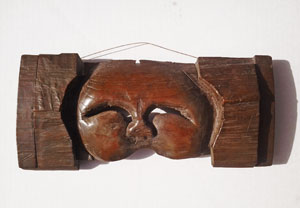
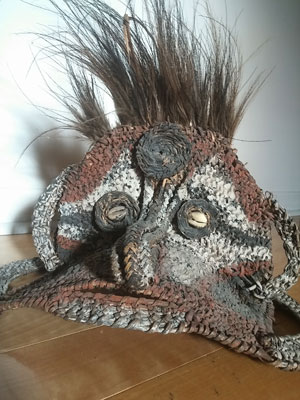
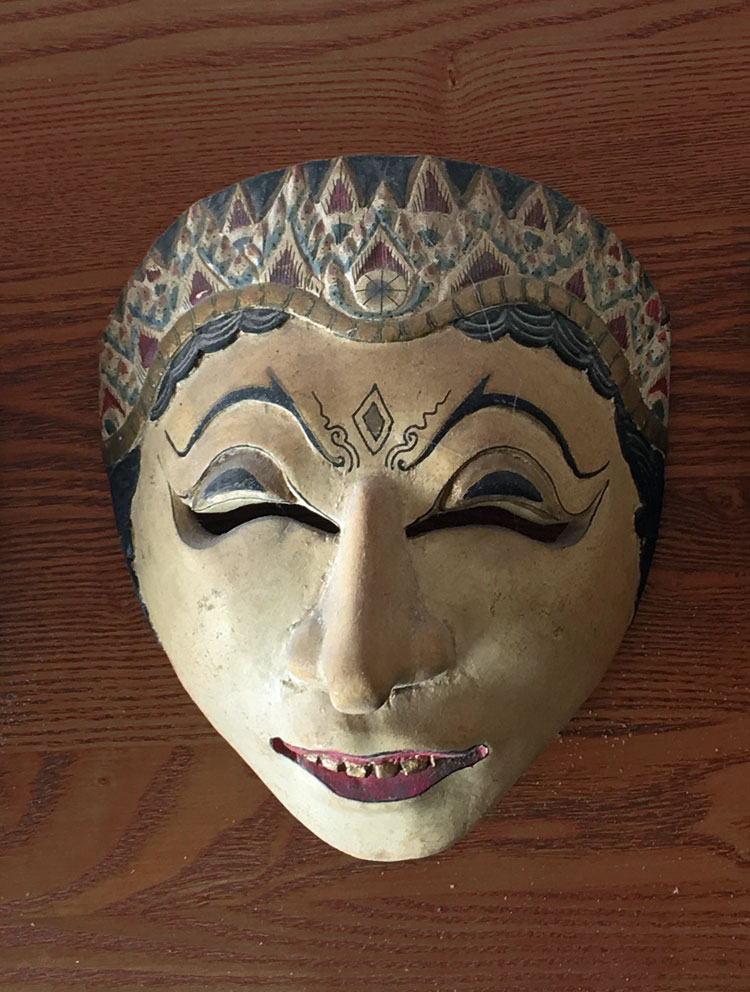
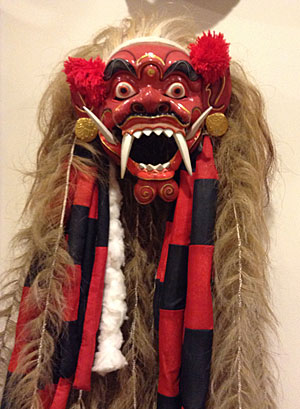
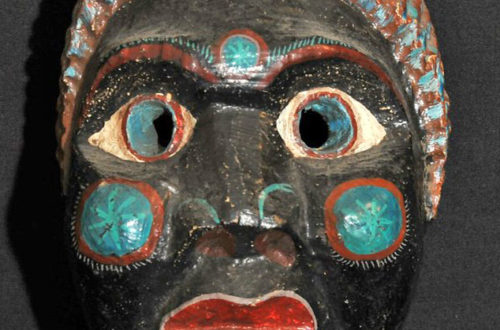
3 Comments
Chris
Very special, three categories come to my mind:
1) a carving from the Alps region: people here use to carve similar sculptures to hang on the wall made predominantly of such hard, heavy and dark wood which can be polished beautifully.
2) A rather out of style Venetian mask of some carver/mask maker exploring new grounds.
3) A mask from the far north where blazing white landscapes make such tiny slits a comfortable advantage – so it could be from a pre-plastic-goggles era.
Interesting are the two rather awkward blocks on the sides – if it is a mask to be worn, so these blocks maybe are thought to enable the wearer to hold on to them in order to hold the mask in place.
Whatever, without more info it seems to me to be rather a carver’s joy than a real ethnographic mask to be worn….let’s hope it is not like that.
Greets, Chris
Nate
I like Chris’ first option the most, although I cant say with any certainty that options 2 or 3 aren’t valid. I find it doubtful that the item is made of oak or of a re-purposed piece of barrel. The item appears to be denser, heavier, and darker than I’d expect to see with oak. It also looks like the item is thicker than is typical board from a oak barrel. It does have a remarkable resemblance to a typical Balinese half-face in its nose, eyes, cheeks and overall design. Especially in what appears to be its smaller than normal size. Its also interesting that the lip seems uneven and ever so slightly hints towards a Balinese hair lip mask too. It appears to perhaps once been mounted to something by way of the sunken-edges and perhaps an artifact of a larger piece, since mounted with string for display. For value sake, I’d go with the sailor story….
Chris
Yeah, Nate, good idea, I didn’t remember the south east Asian half-masks, considering the Google pictures of them, the resemblance of style becomes more than evident. So, I would decline from my Swiss-Alps-Carver’s-caprice and would instead propose that the piece was mounted above some window or door of a traditional Indonesian house or theater room. The wood seems definitely tropical, and thinking it well, it does not resemble so much any current European wood for carvers. Swiss wood carvers also prefer hookier and more detailed carvings, portraying old persons or dwarfish or coboldish faces. However, I doubt the 1845 story..tropical woods are ideal to be polished by purpose, what would have happended here, in my eyes, as the polish goes too deep into the hides beside the eyes as to have happened by touching and wearing it.
A last educated guess would point towards the Yup’ik….the loved to carve flat faces into wooden planks. However, the mouth is usually visible and frankly, how would a tropical wood arrive at the far north in 1845 – not probable.